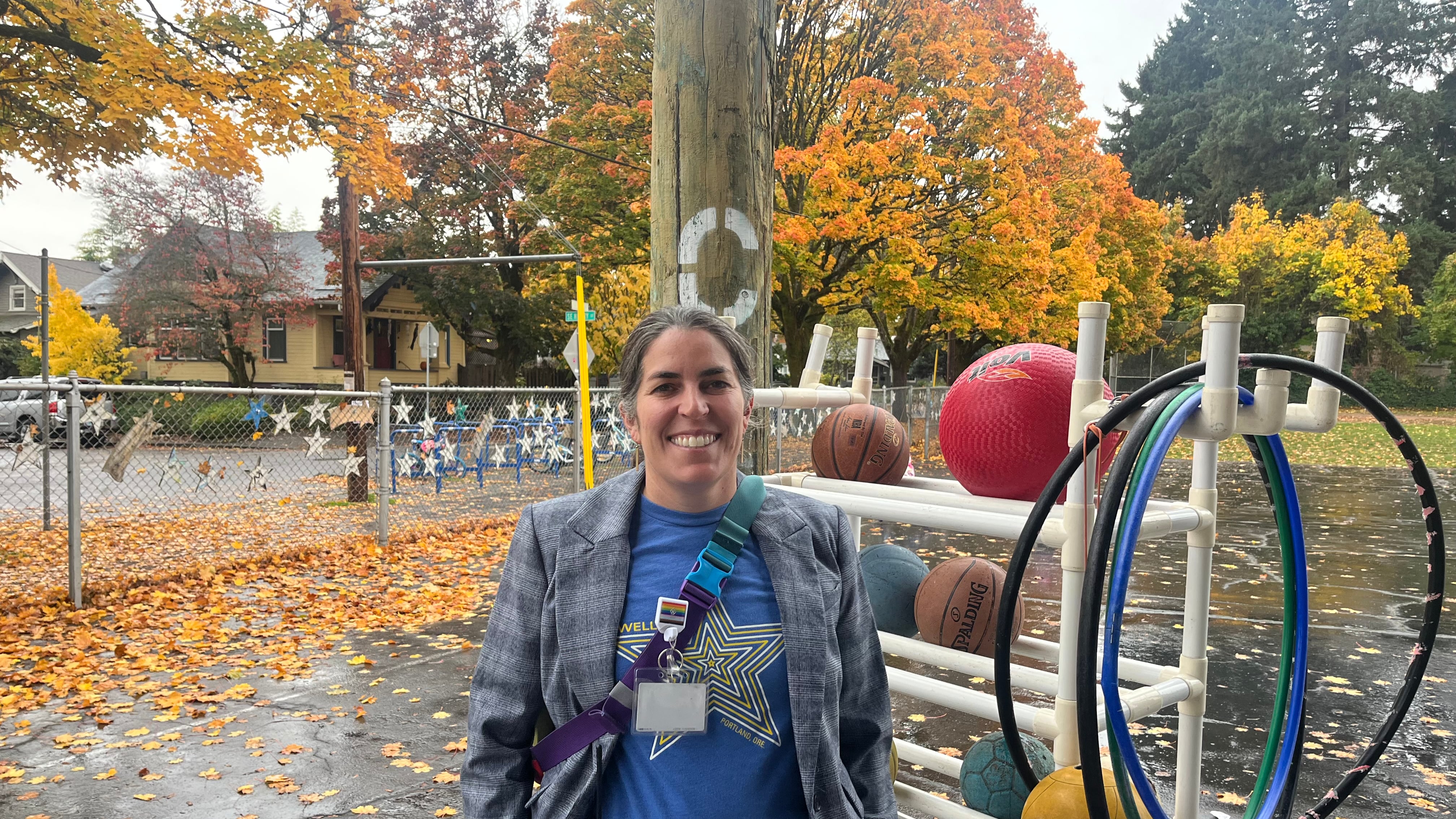Zoey, a third grader at Llewellyn Elementary School in Southeast Portland, is all too aware when the weather’s warm.
That’s because, like many aging Portland Public Schools buildings, her elementary school doesn’t have air conditioning. Temperatures rise fast in her classroom, and the large swath of blacktop surrounding the building only adds to the heat.
“It doesn’t feel good,” Zoey says, on trying to learn in those conditions. “I noticed I was almost falling asleep in class when it was really hot because it was just the hotness that was making me tired.”
As it turns out, 8-year-old Zoey is not the only one feeling the heat at Llewellyn. The school is an urban heat island and the hottest point in the neighborhood in summer, says her mom, Kristin Pool Cohen, a horticulturalist who also teaches garden education at Llewellyn. And the school borders the Oaks Bottom Wildlife Refuge, which has in recent years seen more algae blooms than ever before. Those blooms are coming in part from runoff from the school’s blacktop, which she says causes both erosion and pollution.
So when parents approached principal Diana Collins at the start of the 2024–25 academic year about revamping the school’s playground, a small goal to replace a play structure expanded into a much bigger vision to transform the schoolyard into one that would benefit both student learning and play, and the larger community.
The first priority: removing 11,000 square feet of blacktop from around the school and replacing it with native species, in hopes of attracting more migratory birds to the school.
“We’ve been experiencing more closure days because of heat in the classroom…and I thought it also would be really cool to make that a climate resilient garden that we could add a lot of educational elements to so people in the community could get ideas for their own homes of how they could kind of deal with increased heat without just turning to air conditioners,” Pool Cohen says. “Then [as the project grew] we realized we could rope in all of these different elements that were needs that different parents had noticed on our campus.”
There’s not much extra money floating around at PPS these days, so parents and school staff rallied to find other sources of funding. After months of planning, Llewellyn secured a $579,486 Nature in Neighborhoods grant from Metro, which funds projects that preserve or restore local habitats while increasing access to those natural spaces. The school is also working with about $250,000 in in-kind donations from groups such as Friends of Oaks Bottom and the Sellwood-Moreland Improvement League, Collins says.
Last Tuesday, the Portland School Board officially approved the project, and Collins hopes the blacktop removal will be finished by summer 2027.
Adjusting the outdoor space will also make Llewellyn more friendly for kids who aren’t necessarily into ball sports, which is what the schoolyard is currently configured for. And it will also better accommodate the school’s growing number of neurodivergent students.
“We have a lot of neurodivergent students here at Llewellyn, and we find that students need a variety of different sensory tools to regulate and also like into the classroom in a way that they can reset and feel ready to go again,” Collins says. “By providing spaces for kids to chill and have plants and maybe there’s some smelling opportunities and different ways for people to interact with our playground, I think that will really help them a lot.”
What’s happening at Llewellyn also offers a creative solution to address climate change and heat-related closures, which have become more frequent in recent years and are a pain point for PPS. Jason Bernagros, a landscape architect and parent of a first grader at Llewellyn who helped with the grant, says his daughter has mentioned her discomfort at times in the classroom during heat spells.
“Obviously a bigger cost is being able to update an HVAC system,” he says. “But there’s a lot that can be done with increasing the canopy cover so that if windows are open, it’s actually cool air going into the building.”
Collins says the project’s theme fits well into the Llewellyn’s environmental focus, and that parents have already begun strategizing how to align curriculum with some of the new projects. The project also has two future phases in the works: replacing the play structure on the playground and trying to drain the field, which gets muddy with rain.
Pool Cohen says she will involve students in grant reporting, including biodiversity counts and temperature checks, developing skills in data collection and grant writing along the way. But she says her hope is that the space will become accessible not just to the school’s students, but to other children in PPS and the wider neighborhood. She notes schools across Portland are in heat islands similar to Llewellyn’s, and that what’s happened at the elementary school could be an example for PPS.
“Anything we can do on this piece of property to cool and filter our water is going to help make sure that Oaks Bottom is a more resilient ecosystem,” she says. “[That’s] going to provide this positive feedback loop of helping to cool our climate. I think, for PPS and for our buildings, being able to think about climate resilience in this broader way is also financially an important move.”

